Interview with Edoardo Sabbioni, professor of Mechanics at the Politecnico di Milano
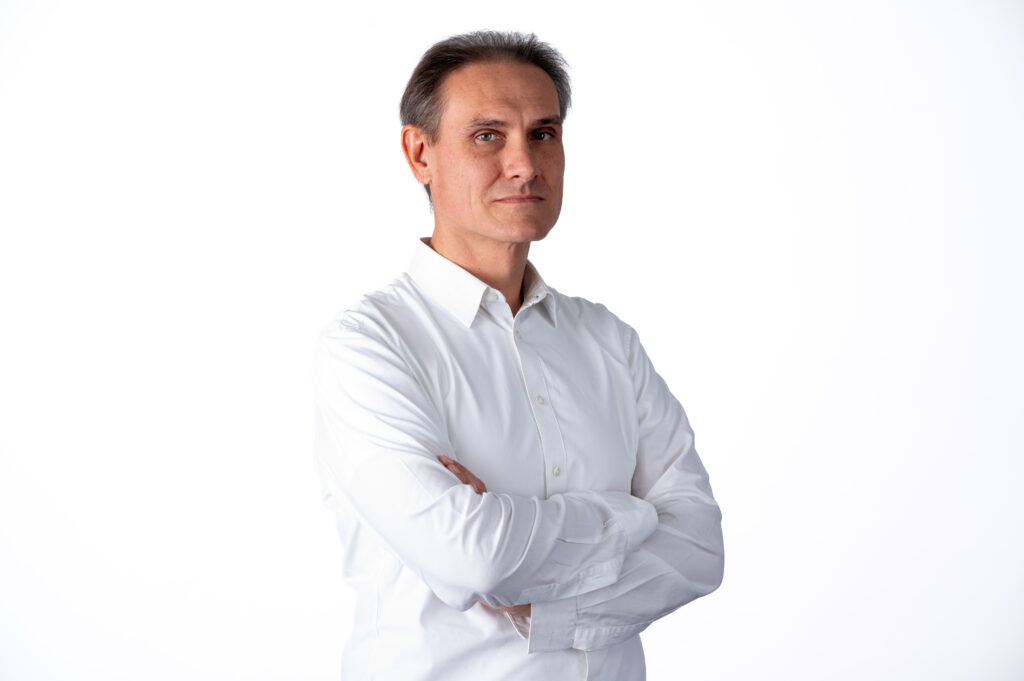
If you often find yourself complaining about traffic, sudden braking, or endless waits at traffic lights during your morning bus ride, the TECHBUS project might be the answer to many of these problems. We spoke with Professor Sabbioni from the Politecnico di Milano, who told us how this innovative project—developed in collaboration with several public and private partners—aims to revolutionize urban transport by making it safer, more efficient, and more sustainable through the use of intelligent, connected electric vehicles. Here’s what he told us.
Professor Sabbioni, let’s start from the beginning. How did your journey start?
I graduated in Mechanical Engineering from the Politecnico di Milano in 2002. I wrote my dissertation at the Fiat Research Centre where I studied thermal models of brakes and braking control systems. I then continued with a PhD, research grants, became a researcher and am now an associate professor and still at the Politecnico.
So, your entire academic career at the Politecnico. But were you passionate about mechanics even as a young boy?
Yes, I have always been fascinated by cars and motorbikes. I always wanted to be an engineer. Then, at the Politecnico, I realised how mechanics is a multi-faceted subject that embraces computer science, automation, telecommunications… all skills that are increasingly interconnected in today’s projects.
One such project is TECHBUS. Can you tell us about it?
TECHBUS originated in a Joint Research Lab on autonomous, connected and electric mobility, supported by the Fondazione Politecnico, with the aim of improving the efficiency, comfort and safety of local transport. It has seen the involvement of numerous public and private entities – from ATM and Vodafone, the real cornerstones of the project, to IBM, Brembo, ST Microelectronics, Generali Assicurazioni, the Chamber of Commerce of Lombardy, and the support of the Municipality of Milan that gave us permission to carry out some experiments.
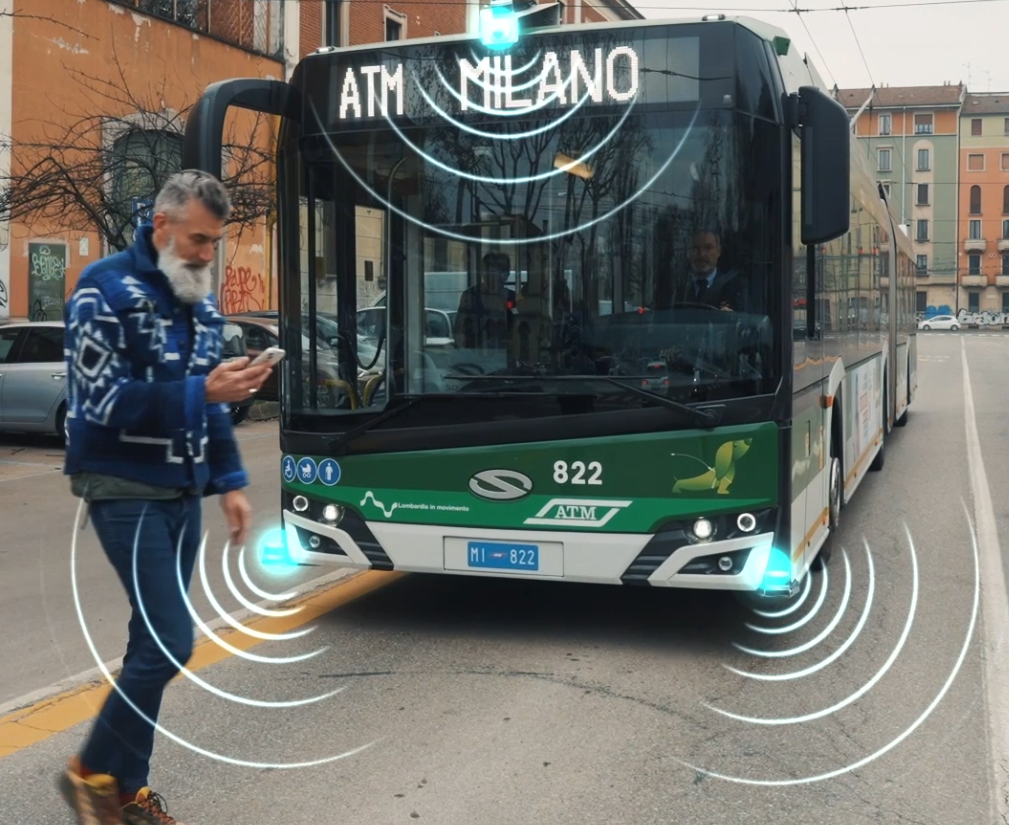
What was the aim of the project?
Not just one aim, but four; first of all, to make mobility more sustainable through electrification; then to improve the comfort of passengers by making the travel experience more pleasant and comfortable for all users of the public service; to increase the efficiency of the transport service; and to improve safety. To achieve these aims, first of all we installed instruments and sensors on board the vehicle to increase awareness of the environment around it. These instruments acquired data that could then be sent to the driver.
How?
We worked on one of ATM’s (Milan’s Public Transport Entity) electric trolleybuses on the 90/91 line, fitting sensors, lidar, radars, cameras, GPS and advanced navigation systems. The idea is to allow the vehicle to “see” better: detect obstacles, recognise the surrounding environment and communicate with the urban infrastructure, such as traffic lights.
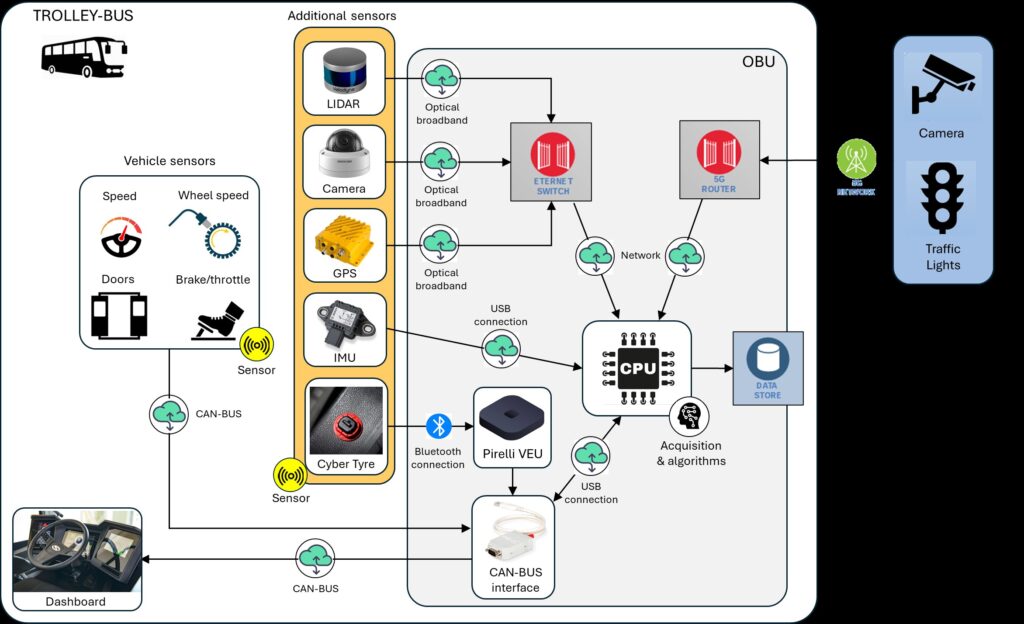
What is LIDAR?
While a camera guarantees vision and a radar measures the distance, speed and direction of different obstacles, a LIDAR is basically a laser that emits rays around 360 degrees and reconstructs a point cloud that represents the environment surrounding the vehicle including pedestrians, cyclists or any other obstacles that could be encountered on the road. After installing the instruments on the vehicle, we connected the vehicle with the infrastructure.
So how did you connect the bus?
As a case study, we connected the vehicle with around twenty traffic lights along the 90/91 line, so that information about the timing of these 23 traffic lights could be received on board the vehicle. So red light, green light. How much time I have before the green light changes to red and vice versa.
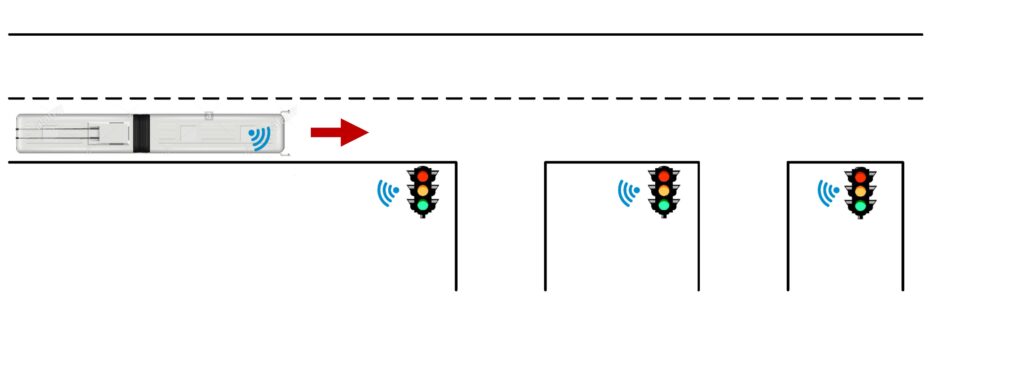
What are the advantages of this type of connection?
For example, knowing in advance when a light is about to turn red allows the driver to slow down gradually, avoiding sharp braking. This improves safety, especially for standing passengers. And if the light is red and I know it will stay red, I can keep the doors open at the stop, allowing stragglers to come aboard. And again, I can reduce consumption because less acceleration is required.
By how much?
In the experiments we carried out, outside peak hours and when the vehicle is not in service, fuel consumption can be reduced by around 20% by connecting the vehicle with traffic lights.
It already seems very real. What point has the project reached?
We have completed a preliminary experimental phase in the city that was a real success; naturally, several issues remain unresolved, the first being the testing of the systems in a real life context, in traffic. The project is currently on hold, also because the Municipality of Milan is involved in a new Living Lab project funded by the PNRR (Italy’s National Recovery and Resilience Plan), in which we will experiment with similar solutions in a real urban context.
Did you encounter any obstacles during the tests?
The main challenge was the amount of information the drivers had to handle because at the same time they also had to drive, look out for vehicles, other road users such as pedestrians, cyclists, scooters and be on the alert for passengers on board who often disturb them. Specifically, to transmit data to the driver, we had to redesign the vehicle dashboard to convey useful data, such as the optimal speed to keep or the traffic light countdown. Proper training is a must.
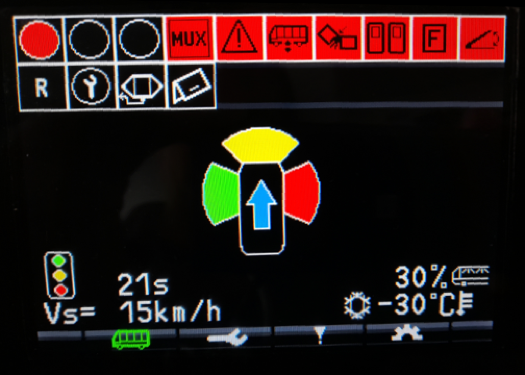
And so you’re thinking of using simulators to train drivers, right?
That’s right. The Politecnico’s simulators can help them get used to these new tools in a controlled environment, before facing real traffic.
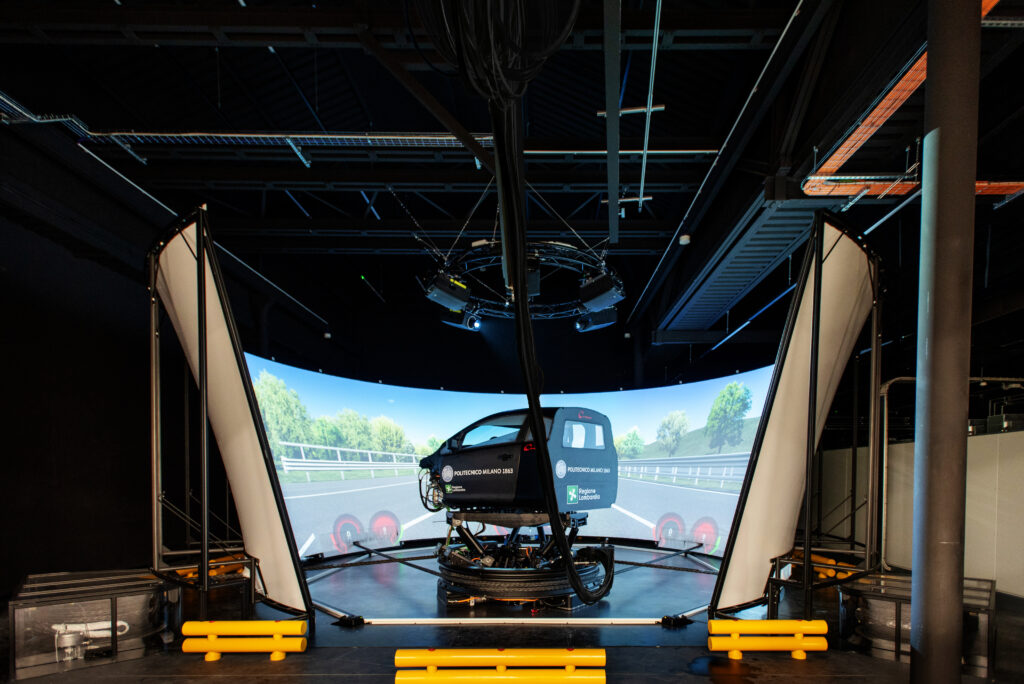
What do you think the future holds for us?
Increasingly connected and automated mobility. Not only for convenience, but above all for safety: in fact, the risk of accidents is lower if vehicles, infrastructures and users exchange information in real time. I am thinking above all of cyclists: at present, they often can’t be seen from trucks and buses. These “blind spots” can be eliminated using smart sensors and cameras.
Are you working on any other projects at the same time?
Yes, besides continuing to study these issues within the Municipality of Milan’s Living Lab project, I am working with the National Centre for Sustainable Mobility (MOST) and on projects in the railway sector aimed at improving safety at stations or in areas where works are being carried out near or on the tracks.
What advice would you give a young person who is uncertain about whether to study mechanical engineering?
Do not let the name scare them. Mechanics is by no means an “ancient” discipline: it is the basis of any moving technology, and is constantly evolving. From autonomous driving to Industry 4.0, wherever there is a moving object, a mechanical engineer is behind it.
And what do you like doing in your free time?
I enjoy travelling and walking in the mountains, trekking especially. It’s a way to switch off, breathe and recharge.
Video of TECHBUS experimentation.
